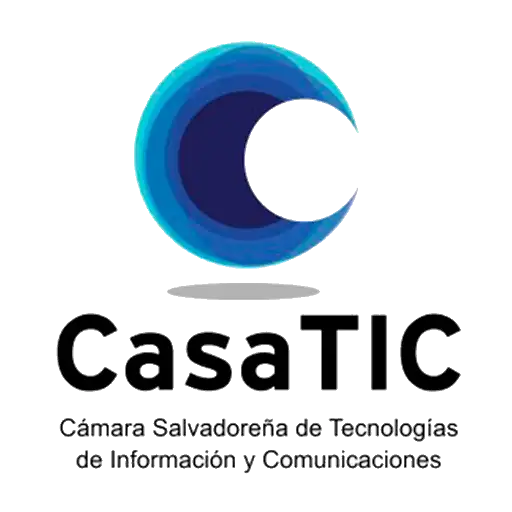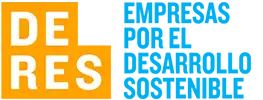-
Who we are
-
-
StrategyMission
To solve the challenges of organizations and communities through intelligent, secure, sustainable, and people-centered solutions, so they generate real value in their social and productive contexts.
VisionTo be the chosen company by organizations seeking to innovate with quality, purpose, and trust in the intelligent era.
Learn moreValues- Ethics and transparency
- Professionalism
- Respect
- Honesty
- Innovation
- Responsibility
- Effectiveness
- Integrity
- Customer orientation
- Punctuality
-
-
-
History
Sofis Solutions was born in 2005, in the city of Montevideo - Uruguay.
Since its inception, the main driver was and remains quality. This applies to processes, products, and relationships with the environment.The internationalization of the company It was one of the founding objectives. In the first stage, it expanded from Uruguay, and in the second stage, it opened offices in Latin American countries. Currently, it has offices in Montevideo, Panama, El Salvador and Ecuador.

-
-
-
Alliances








-
-
-
Certifications

CMMI-DEV-3
More informationNational Quality Award
More informationISO 9001:2015
Quality Management SystemISO 37001:2016
Anti-Bribery Management SystemISO 14001:2015
Environmental Management System
-
-
-
SustainabilityLearn more
Sofis Solutions integrates environmental, social, and governance (ESG) principles into its management and operations, driving sustainability through Digital Transformation. Its strategic approach prioritizes energy efficiency, digital inclusion, and transparency in digital governance, contributing to the responsible development of organizations.

-
-
-
What we do
-
-
IT projectsLearn moreAt our Software Factory, we specialize in providing software development solutions with a focus on excellence and sustainability.
-
-
-
Software qualityOur software quality services comprehensively address the aspects or dimensions of software quality, addressing this approach throughout the entire software development cycle.
- Manual and automated functional suitability testing
- Performance testing
- Software product quality
- Software quality consulting
Learn more
-
-
-
Staff AugmentationLearn moreWhat is IT Staff Augmentation? IT Staff Augmentation is a specialized technical staffing model that enables organizations to increase their agility and respond to the changing technological needs of the market.
-
-
-
ConsultancyIn the public sector, strategic decisions and projects with citizen-centered designs and excellence have the power to transform entire communities.Learn more
-
-
-
BIonA SuiteBIonA Suite is a comprehensive platform for the intelligent management of processes and services in public and private organizations. BIonA Suite facilitates smart transformation with a focus on public value and user experience. Learn more
-
-
-
Projects
-
-
Recent projects
 FOCAL Regional StudyFOCAL - El Salvador
FOCAL Regional StudyFOCAL - El Salvador Single Registry of Uruguayans AbroadMinistry of Foreign Affairs - Uruguay
Single Registry of Uruguayans AbroadMinistry of Foreign Affairs - Uruguay Population and Housing Census 2023National Institute of Statistics - Uruguay
Population and Housing Census 2023National Institute of Statistics - Uruguay
-
-
-
Digital Public InfrastructureWhat are Digital Public Platforms?ProjectsProducts
-
-
-
-
Mobile applicationsWe create hybrid, native, and PWA solutions for devices with Android and iOS operating systems.
Some of our projects:Digital Patrols, Ecuadorian Bovine Information System, Easy Budget UY, Digital Portfolio, SIGES Teachers App, SIGES Parents App.
Learn more
-
-
-
FOCAL regional studyThe purpose of the study was to carry out a regional analysis with the objective of identifying and evaluating the maturity level of the member countries of the Latin American Government Accounting Forum (FOCAL), currently composed of Argentina, Bolivia, Brazil, Chile, Colombia, Costa Rica, Ecuador, El Salvador, Guatemala, Honduras, Mexico, Nicaragua, Panama, Paraguay, Peru, Dominican Republic, Uruguay and Venezuela.Learn more

-
-
- AI
-
-
Artificial IntelligenceLearn moreAdvanced Artificial Intelligence (AI) and Big Data solutions that transform the way organizations make decisions and optimize their operations. We specialize in the development of intelligent autonomous agents and generative AI solutions using large language models (LLMs), both on local infrastructure and in the cloud.
-
- Press Room
-
-
Sustainable development
-
- Innovation
-
-
#GreenSofisMore information
Methodology
#GreenSofisSustainable Digital Transformation Conference
#GreenPath
-
-
-
AI For Everything
It is an initiative by Sofis Solutions, from the Intelligent Solutions Division, that promotes the adoption of artificial intelligence as a key driver of efficiency and effectiveness in the intelligent era.
It integrates both administrative and operational processes, promoting an organizational evolution where technology amplifies knowledge, optimizes decision-making, and generates value in a sustainable and inclusive way.
More information
-
- Contact us
- ES PT-PT
-

Sofis Solutions launched the "Educational Information Systems" webinar series – Part Two
Montevideo, October 27, 2020.
Last Wednesday, October 14, the webinar "Gender Approach in Educational Information Systems" was held, which is part of the webinar series "Educational Information Systems," organized by Sofis Solutions. This second note contains the participation of the third invited speaker, who shared about the importance of indicator systems based on nominal data, trends in gender indicator topics, as well as the presentation of the study "Gender Gaps in Latin America. A Status Report."
The third intervention of the webinar "Gender Approach in Educational Information Systems" was led by Eng. Federico Mejer, senior education consultant for the World Bank, European Union, UNESCO, UNICEF, and the IDB, who began by presenting the characteristics of indicator systems in Education. Among these, he highlighted the importance of timely identifying what needs to be reported, in accordance with the goals or objectives of educational policies, as well as selecting the set of indicators for which information availability exists to build them, and the operational reciprocity between information systems and the indicator system. For this, Eng. Mejer adds: "(…) It is clear that an information system has a broader scope than an indicator system, but often the need to generate an indicator system or incorporate a specific indicator leads the information system to include the registration of variables from internal or external sources to be able to produce new indicators. Therefore, this dynamic interrelation also constitutes a strategy of synergy and improvement of information systems."
Additionally, Eng. Federico Mejer emphasized the linkage that information systems have with the Sustainable Development Goals (SDGs) of the 2030 Agenda, specifically with SDG 4 "Quality Education," which aims to guarantee inclusive, equitable, and quality education, guiding countries in the region so that education becomes the main driver to break the cycle of poverty and improve people's quality of life. From a statistical point of view, with the Millennium Development Goals (MDGs), specifically MDG 2 "Achieve universal primary education" and MDG 3 "Promote gender equality and empower women," these were based on a specific and measurable set of indicators that help improve national capacity for monitoring in many developing countries. On the other hand, SDG 4 has a broader approach to generate new challenges in the development of indicators that can monitor progress toward goals compared to its predecessors; another difference highlighted is the gender parity index, since MDG 3 monitored gender parity only in relation to enrollment in primary, secondary, and tertiary education and adult literacy, whereas SDG 4 requires all indicators to be disaggregated by sex as much as possible.
"Nominal information allows tracking as well as individual monitoring of students, so that algorithms or formulas can identify variables such as student absences, low performance, or certain difficulties they may have. Nowadays, some systems incorporate technologies linked to student registration systems, which allow clearer identification of a student's performance in their school trajectory. This, in turn, allows for early warnings that serve as indicators or red flags to act and provide support classes, special materials, apply models, or curricular adjustments tailored to students' adaptive learning. This is of utmost importance regarding the information that a nominal data-based information system provides," adds Eng. Mejer.
To conclude his participation, Eng. Mejer presented the study entitled "Gender Gaps in Latin America. A Status Report," developed within the framework of the Research Program for Social Inclusion in Latin America (PISO) of the Socioeconomic Research Directorate of CAF - Development Bank of Latin America. This research places special emphasis on the advances and setbacks in the region in reducing gender gaps in educational, family, and labor spheres. According to this study, Eng. Mejer highlights some elements about the information derived from indicators that can be extracted when male and female sex data is available within information systems.
Such is the case with Figure 2.1.4, which focuses on the years of education of women and gender gaps (men-women) in years of education by country, between the ages of 25 to 54 years. Eng. Mejer explains: "Here one can analyze the advantages in years of education in some countries of the region that women have over men in the adult population aged 25 to 54 years. For example, in 2015, the difference in years of education ranged up to 1.3 years in favor of women in Venezuela. In contrast, in countries like Chile, Mexico, El Salvador, Guatemala, and Bolivia, the difference leans in favor of men. For instance, in Guatemala, women have 5.1 years of education, while the average for men is one year more."
According to the study, in twelve of the eighteen Latin American countries, women have already surpassed men in years of education, with an average advantage of 7 months, while in the remaining six countries, the advantage is an average of 7 months but in favor of men.

Infographic: Figure 2.1.4. Years of education of women and gender gaps (men-women) in years of education by country. Study "Gender Gaps in Latin America. A Status Report." The full study is available at the following link: https://cutt.ly/JgEkyHj
To conclude the webinar, the speakers answered questions from the audience, who connected from different countries in the region such as the United States, Guatemala, El Salvador, Ecuador, Argentina, Uruguay, among others. They also shared their conclusions about the virtual meeting, among them, Lic. Violeta Muñoz, Gender and Social Inclusion Manager of FOMILENIO II, states: "We hope there are more discussions like this because the challenge is great for all countries in the region to achieve quality education and education that does not deny possibilities but contributes to greater opportunities and the exercise of rights for girls and boys, according to their conditions."
On the other hand, Lic. Cristina Tello, Gender Specialist at Sofis Solutions, mentions: "It was a pleasure to participate in this webinar, I thank my colleagues for all the information and concepts shared. This is a tough path but progress is made little by little and that must be an incentive to keep moving forward."
And finally, Eng. Federico Mejer expresses: "Thank you very much for keeping up with the pace of this presentation and I invite you to continue discussing, analyzing, and contributing to improving information systems, which generally rely on very active participation from users. Also, all user requirements are what truly nourish, guarantee, and ensure the quality of information systems. On the other hand, anything that can be established as a routine for data production will contribute to that information being present and truly used for decision-making. Finally, I invite you to keep information systems, such as SIGES in El Salvador and other systems in the region, in constant use and present to truly support decision-making."
The webinar "Gender Approach in Educational Information Systems", was recorded and is available on the YouTube channel Sofis Latinoamérica: https://youtu.be/U7N-isJBhXc.

El pasado 20 de noviembre se llevó a cabo en la Sala Verdi la edición piloto de Burocracia Creativa UY 2025, la antesala local del Creative Bureaucrac......

Between October 14 and 16, 2025, the XI Forum of Government Accounting Offices of Latin America (FOCAL) was held in Santiago, Chile, a regional refere...

Within the framework of the United Nations Global Compact's 2024–2025 strategy, which proposes five transformative changes to accelerate business impa...












 Digital Signature
Digital Signature BionA Suite
BionA Suite Biona SIgn
Biona SIgn






















